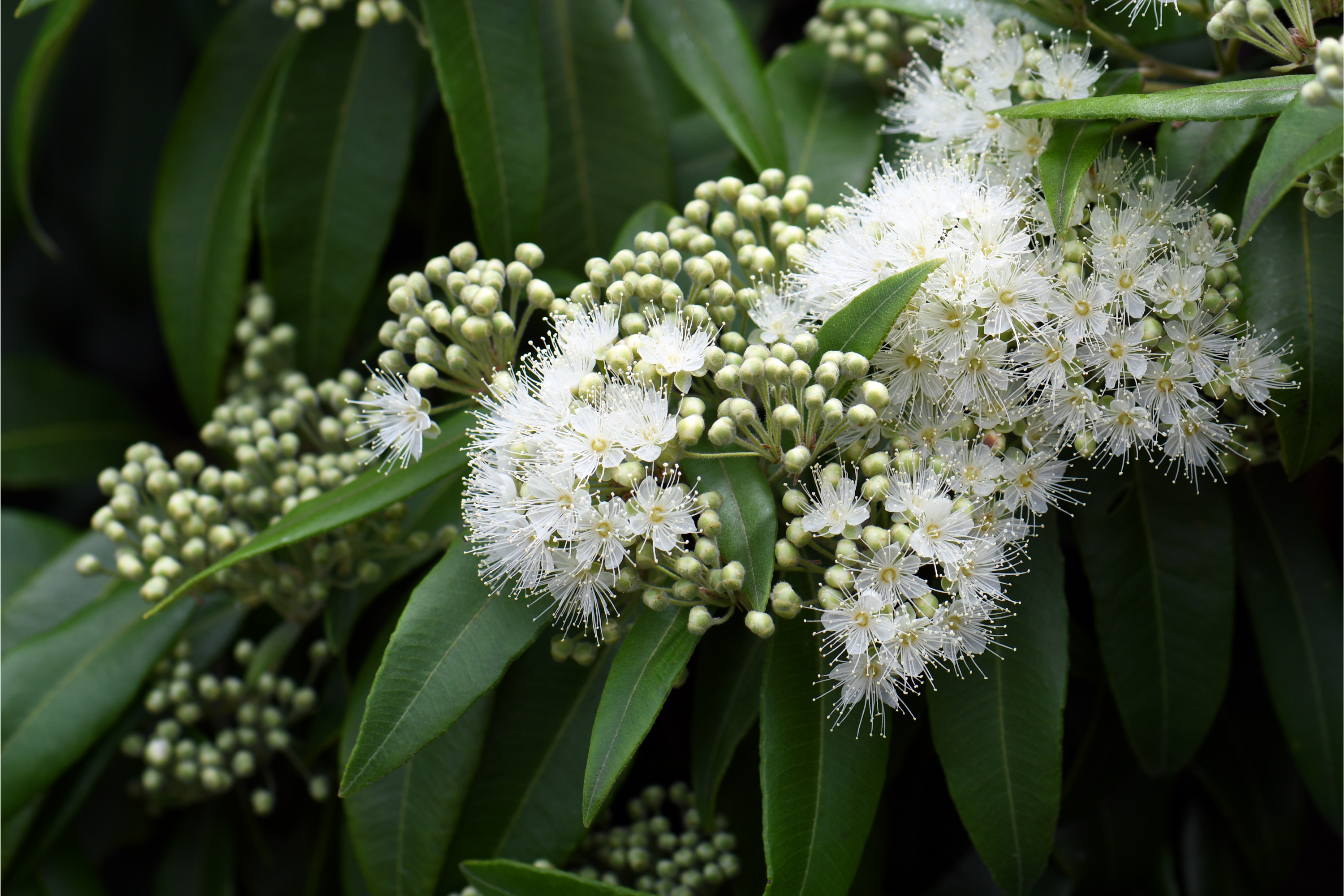Lemon myrtle
(Backhousia citriodora)

Description
Backhousia citriodora (common names lemon myrtle, lemon scented myrtle, lemon scented ironwood) is a flowering plant in the family Myrtaceae, genus Backhousia. It is endemic to subtropical rainforests of central and south-eastern Queensland, Australia, with a natural distribution from Mackay to Brisbane. Other common names are sweet verbena tree, sweet verbena myrtle, (lemon scented verbena is another species), and lemon scented backhousia. It can reach 6 m (19+1⁄2 ft) in height, but is often smaller. The leaves are evergreen, opposite, lanceolate, 5–12 cm (2–4+1⁄2 in) long and 1.5–2.5 cm (5⁄8–1 in) broad, glossy green, with an entire margin. The flowers are creamy-white, 5–7 mm (3⁄16–1⁄4 in) in diameter, produced in clusters at the ends of the branches from summer through to autumn, after petal fall the calyx is persistent. Lemon myrtle was given the botanical name Backhousia citriodora in 1853 after the English botanist, James Backhouse. The common name reflects the strong lemon smell of the crushed leaves. "Lemon scented myrtle" was the primary common name until the shortened trade name, "lemon myrtle", was created by the native foods industry to market the leaf for culinary use. Lemon myrtle is now the more common name for the plant and its products. Lemon myrtle is sometimes confused with "lemon ironbark", which is Eucalyptus staigeriana. Lemon myrtle is one of the well known bushfood flavours and is sometimes referred to as the "Queen of the lemon herbs". The leaf is often used as dried flakes, or in the form of an encapsulated flavour essence for enhanced shelf-life. It has a range of uses, such as lemon myrtle flakes in shortbread; flavouring in pasta; whole leaf with baked fish; infused in macadamia or vegetable oils; and made into tea, including tea blends. It can also be used as a lemon flavour replacement in milk-based foods, such as cheesecake, lemon flavoured ice-cream and sorbet without the curdling problem associated with lemon fruit acidity. The dried leaf has free radical scavenging ability.
Taxonomic tree:







